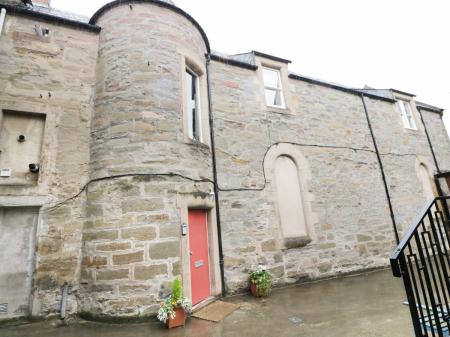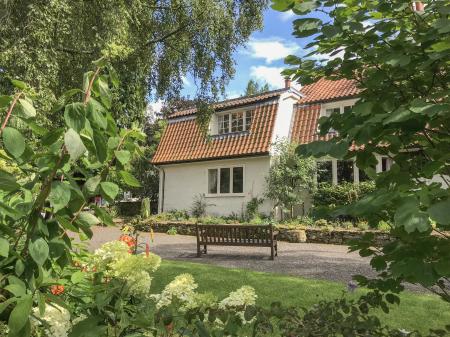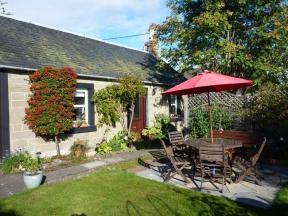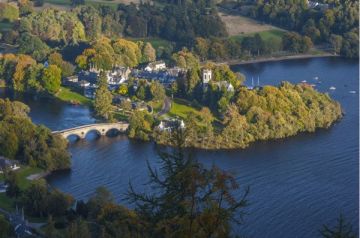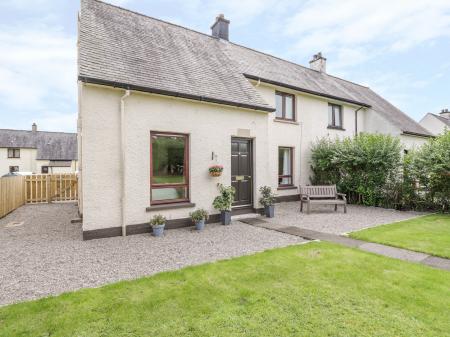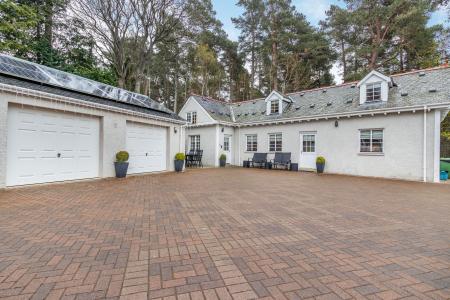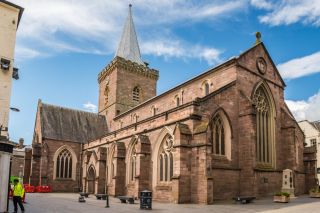
The first written record of a church in Perth comes from the year 1128 when David I of Scotland granted it to Dunfermline Abbey on condition that the abbey provide a priest for the church. The church was consecrated (or re-consecrated) in 1242 by Bishop David de Bernham. That suggests that though the church may have been begun as early as the 12th century, the building process dragged on for over a century.
The church was dedicated to St John, and this dedicated gave Perth its first name, St Johnstoun. Within only a few decades St John's must have gained a considerable reputation and prestige, for when Alexander III died in 1286 his heart was buried here.
The church was completely rebuilt in the 15th century. A new choir was constructed from 1440, with the nave following later in the same century. The choir is now the oldest part of the building we see today. The imposing central tower was later used as a model for St Machar's Cathedral in Aberdeen. It was complete some time prior to 1511.
One historic feature is the porch, unusually situated on the north side of the nave. The porch was known as Halkerston's Tower, after 15th-century architect John Halkerston. The porch originally stood two storeys high, with the second-storey chamber used as a gaol for prostitutes. The gaol was removed in 1823, but the chamber was restored in the 20th century.
The most memorable moment in the history of St John's Kirk took place on 11 May 1559, when John Knox preached his famous sermon against idolatry. The sermon is considered the watershed moment in launching the Scottish Reformation.
His words fell on fertile ground; a priest tried to say mass at a side altar inside the church, and a young boy objected. The priest foolishly struck the boy, who reacted by throwing a stone which broke a statue on the altar. Then things really kicked off; an angry mob destroyed most of the interior furnishings, smashing anything that smacked of idolatry.
The mob then proceeded to the 3 nearby monasteries of Blackfriars, Greyfriars, and Charterhouse, where they effectively stripped the buildings of any interior decoration, leaving them empty shells.
The Reformation did more than just strip St John's of its interior decoration; the kirk was divided into two sections, and later into subdivided into thirds, with interior partition walls creating an East, Middle, and West kirk. Each kirk had its own minister.
St John's was again at the forefront of religious change in 1618, when a general assembly of the Scottish Church met here and reluctantly bowed to royal pressure, accepting the 'Five Articles of Perth', effectively imposing Anglican practise on Scottish churches. Both Charles I and II worshipped at St John's, and a century later, so did Bonnie Prince Charlie.
The church was restored in 1825 and again in 1923 by Sir Robert Lorimer, who removed the partitions.
One of the items damaged by the Reformers was the 15th century Virgin Mary chandelier. This was inserted in the church by the Skinners Incorporation, but after the Reformation damage it was removed, and in the 19th century it was sold to the Perth Museum. It was restored to the kirk during the 1923 restoration.
Despite the damage done by John Knox's followers, there is plenty of historic interest inside the kirk. Among the highlights are a medieval piscina, holy water stoups, and statuary niche. The font, or more accurately a baptismal basin, is one of the oldest surviving basins in Scotland, dated to around 1590.
 We've 'tagged' this attraction information to help you find related historic attractions and learn more about major time periods mentioned.
We've 'tagged' this attraction information to help you find related historic attractions and learn more about major time periods mentioned.